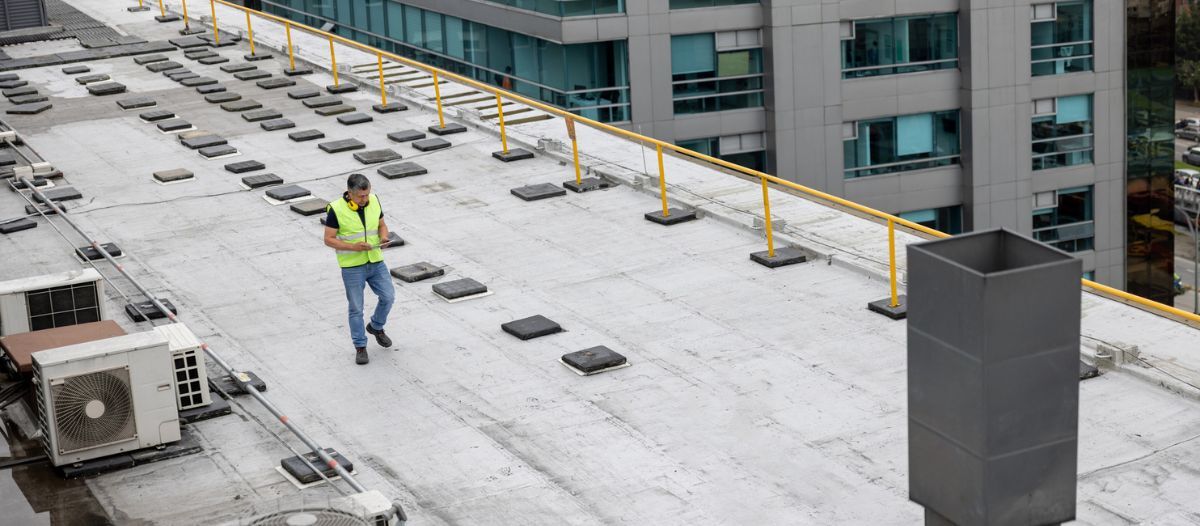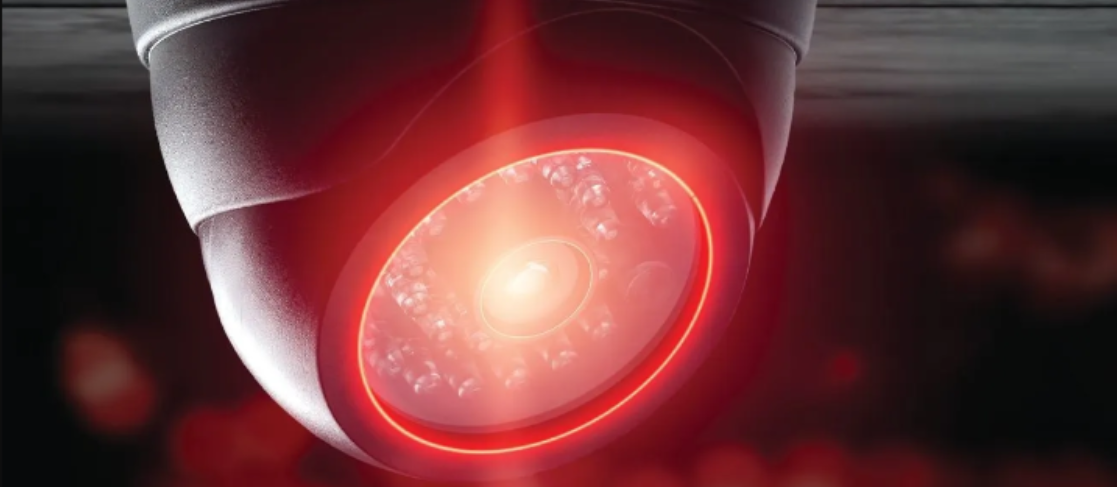Unlocking Longevity
Why regular roof maintenance is essential

Protecting a facility’s lifespan starts with prioritizing its core structures, and the roof is central to this effort. For facility managers, engineers, building owners and procurement specialists, ensuring the long-term performance of a roofing system requires a comprehensive maintenance strategy. Regular inspections, timely repairs and structured upkeep are critical components of extending the roof's lifespan. Beyond preventing minor issues from escalating into costly problems, these practices contribute to sustainability and operational efficiency, making roof maintenance a strategic necessity.
The importance of roof maintenance
A roof is a facility's frontline defense against weather, shielding it from rain, snow, wind and extreme temperatures. Over time, these elements take a toll, with neglect often compounding damage. The implications of deferred maintenance can include escalating repair costs, compromised building safety and increased risk of structural failures. Facilities with neglected roofs are prone to disruptions that hinder daily operations and can jeopardize the health and safety of occupants through mold growth or weakened structures. The financial burden associated with unexpected roof replacements or repairs can be significant, further highlighting the need for regular maintenance. A disciplined maintenance program upholds the facility’s operational integrity while keeping long-term investments intact.
 Key benefits of roof maintenance
Key benefits of roof maintenance
Extending the lifespan of roof systems
Preventive maintenance plays a crucial role in preserving the roof’s performance over time. Regular inspections and immediate attention to minor problems, such as small leaks or membrane damage, reduce the likelihood of needing a full replacement prematurely. Specific areas of focus during inspections often include membranes, flashings and drainage systems, as these are frequently affected by wear and tear. A roof's longevity is a direct result of proactive care, which helps detect underlying issues and address them before they compromise the entire system.
Cost efficiency through proactive measures
Investing in regular preventive maintenance proves far more cost-effective than dealing with major repairs or replacements. When minor issues are resolved early, it reduces the likelihood of extensive, costly damage. This approach eliminates the strain of unplanned expenses and allows for a more calculated allocation of resources. Addressing concerns promptly aligns with sound financial planning principles, ensuring a reliable return on investment.
Improved energy efficiency
Roofs significantly impact a building’s energy performance. High-quality insulation, combined with a watertight membrane, helps stabilize indoor temperatures by minimizing heat transfer. This efficiency reduces reliance on HVAC systems, which lowers energy consumption and operational costs. The thermal resistance of a roof’s insulation depends on its ability to remain dry. When moisture infiltrates the insulation, its ability to resist heat transfer diminishes, leading to increased energy usage, higher costs and potential structural issues. Maintaining an energy-efficient roof supports operational savings while contributing to broader sustainability goals. Facilities with well-maintained roofs have the added advantage of minimizing their carbon footprint.
Mitigating operational risks
Regular maintenance is critical in reducing risks that arise from roof failures. Inspections can identify and address susceptible areas before they lead to leaks, water infiltration or mold development. Leaks are not only damaging to the building but also threaten the assets housed within, including equipment and furnishings. Furthermore, roof failures can create hazards for occupants, reinforcing the importance of scheduled maintenance. Implementing a preventive maintenance strategy is an effective risk management tool that safeguards the building, its contents and those relying on its stability.
Ensuring warranty compliance
Most commercial roofing warranties include clauses requiring regular inspections and maintenance. Compliance with these terms is vital to maintaining warranty coverage. Standard requirements often specify scheduled inspections, the use of certified contractors for repairs and the submission of detailed reports documenting all work performed. Failure to meet warranty conditions can void coverage, leaving the owner solely responsible for repair costs. Following warranty guidelines ensures adherence to the contract and greater financial security.
Environmental impact of maintenance
Sustainability is becoming an increasingly important factor in facility management, and roof maintenance plays a role in advancing environmental objectives. Regular maintenance prevents the need for premature replacements, thereby reducing the volume of roofing materials sent to landfills. Additionally, energy-efficient roofing systems decrease overall energy usage, contributing to reduced greenhouse gas emissions. Reflective roof coatings, for instance, are an effective way to enhance energy performance and reduce heat gain, especially in warmer regions. Incorporating sustainable practices within maintenance routines, such as using environmentally friendly materials and recycling roofing components, aligns with broader goals to minimize environmental impacts.
Advanced technologies in roof inspections
The evolution of technology brings new opportunities for enhancing roof maintenance programs. Drone inspections, for example, are becoming a popular tool for assessing large or complex roofing systems. Equipped with high-resolution cameras, drones can deliver detailed visuals of a roof’s condition, making it easier to identify damage or weak points without causing disruption. Coupled with infrared scanning, they can also detect heat loss or moisture intrusion that might not be visible to the naked eye. Artificial intelligence (AI) and data analytics are also transforming roof maintenance. By analyzing historical maintenance records and weather patterns, predictive models can forecast potential vulnerabilities and recommend targeted preventive actions. This technology enables facility managers to allocate resources more effectively and reduce reactive repair cycles.
Successful maintenance programs in practice
Case studies illustrate the effectiveness of a proactive maintenance strategy. One example involves a manufacturing facility in the midwestern United States, where routine inspections identified early signs of membrane deterioration caused by frequent freeze-thaw cycles. By addressing these issues promptly with targeted repairs and additional insulation, the facility avoided extensive water damage and potential production halts.
Another example involves a health care facility that partnered with roof consultants to implement a comprehensive maintenance plan. The program included biannual inspections, detailed documentation and thermal imaging assessments. Over five years, the facility reported a 20 percent reduction in energy costs due to improved insulation performance and avoided major structural repairs by addressing minor issues during their early stages. These examples emphasize that careful planning and execution ensure optimal outcomes for both financial performance and operational resilience.
Comprehensive maintenance recommendations
Routine inspections
Semi-annual inspections, conducted in spring and fall, are a best practice for maintaining a roof's health. Additional inspections following significant weather events ensure that damage caused by wind, hail or snow is promptly addressed. Inspections should evaluate the membrane, flashings, roof edges and drainage systems, focusing on areas most susceptible to stress and wear.
Cleaning & debris removal
Accumulation of debris on a roof, if not addressed, creates conditions conducive to moisture retention and microbial growth. Regular cleaning, particularly in gutters and drainage systems, mitigates these risks. Removing overhanging branches also safeguards against potential damage caused by falling debris or punctures.
Managing foot traffic
Foot traffic is a frequently underestimated cause of wear and tear. For facilities with rooftop access, it is essential to implement effective control measures. This includes installing designated walkways and using protective pads in high-traffic zones and around critical equipment to minimize damage and extend the roof’s lifespan.
Integration with HVAC maintenance
Roof-mounted HVAC systems play a significant role in the overall health of a roofing system. Well-maintained HVAC equipment reduces the risk of leaks caused by clogged condensation lines, faulty installation or deteriorated weather seals. To prevent these issues, it is essential to align HVAC maintenance schedules with roof inspections, ensuring both systems work in harmony. Only qualified professionals should be granted access to service rooftop equipment or the roof itself, as proper handling is critical to preventing damage.
Documentation practices
Comprehensive documentation of inspections, cleaning and repairs is essential for ensuring warranty compliance and effective long-term asset management. Clear documentation serves as a historical record of the roof’s condition and simplifies decision-making processes related to future maintenance or capital planning. Photographic evidence of roof conditions can further support warranty claims while providing transparency for stakeholders.
Partnering with roofing specialists
Leveraging the expertise of roofing specialists adds value to maintenance programs. These professionals offer tailored advice while assisting with periodic assessments and long-term capital planning. By focusing on quality control, material selection and advanced diagnostic tools, they enhance a roof’s performance and reliability. Specialists also provide clarity when navigating complex warranty requirements and can act as advocates during contractor disputes or insurance claims. Their involvement ensures all maintenance activities align with industry best practices, contributing to better financial outcomes and operational peace of mind.
A strategic asset with long-term value
Roof maintenance is a critical component of facility management. By adopting preventive strategies and leveraging advancements in technology, facilities can secure both immediate cost reductions and long-term operational stability. Comprehensive programs deliver tangible benefits, such as extended roof lifespans, improved energy efficiency and reduced environmental impact. A well-maintained roof enhances the value of a facility, ensuring it remains a secure and efficient asset. Commitments to regular care and proactive planning underscore the importance of treating roof systems not as liabilities but as strategic assets that support organizational success over time. Investing in maintenance today lays the groundwork for lasting value. Through strategy and diligence, roofs become not only functional structures but also contributors to sustainability and resilience. By taking care of these vital assets, facilities can ensure their longevity and performance.

Jason Hackman is a senior roof consultant at Benchmark Inc., where he evaluates and manages roof projects for clients with multiple facilities and complex assets. His journey in the roofing industry began over 30 years ago on the contracting side, where he built a strong foundation in the field. Transitioning to consulting seven years ago allowed him to apply his hands-on knowledge to a broader scope. As a Registered Roof Observer (RRO) certified by the International Institute of Building Enclosure Consultants (IIBEC), Hackman demonstrates his expertise in roof inspection and commitment to maintaining high industry standards.
Read more on Operations & Maintenance or related topics Operations and Maintenance Planning and Facility Improvement
Explore All FMJ Topics










